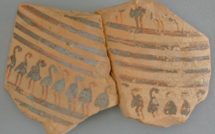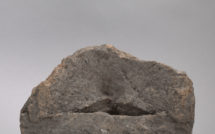
Parallel Thoughts: A Conversation about Columbia University’s Art Properties Collection and the Educational Experience
This is part of our Campus Spotlight on Columbia University and the Université Paris 1, Panthéon-Sorbonne.
The initiative Parallel Heritages: Humanities in Action, led by professors Holger Klein (Columbia University in the City of New York) and Alain Duplouy (Université Paris I, Panthéon-Sorbonne), explores the history, development, and present state of University collections of classical antiquities at, respectively, Columbia University in New York and the Panthéon-Sorbonne 1 in Paris. Announced in Spring 2019, the project brought together faculty members and graduate students from both institutions to study the role that archaeological objects played in the education of art historians and archaeologists in the nineteenth and twentieth centuries, investigate the legal provisions and parameters for establishing such collections of antiquities, and stimulate the study of both collections through a rejuvenated interest in object-centered learning. The seminars also gave scholars and students the opportunity to engage with conservators, historic preservationists, and museum curators, and to jointly explore the genesis and history of these two university collections within the context of their respective American and European traditions. The two seminars provided a forum for interdisciplinary exchange and first-hand exploration of the collections in question. This effort allowed participants the opportunity to visit collections in New York and Paris, and it opened a conversation on the historical connections and divisions between European and American academic and public institutions.
This essay, “Parallel Thoughts,” presents a conversation between Columbia affiliates Maria Dimitropoulos, PhD Candidate in the Classical Studies Program, and Roberto C. Ferrari, Curator of Art Properties in Avery Architectural and Fine Arts Library. The essay serves as an introduction to this special issue of EuropeNow on the Parallel Heritages project and the importance of object-centered learning in education today. Dimitropoulos is currently writing her dissertation, an iconographic study of representations of intrafamilial conflict in Greek art from the seventh to the fourth centuries BCE. During her time at Columbia, she has served as a teaching assistant and principal instructor for courses in Greek and Roman Art and Archaeology as well as courses in ancient Greek literature. Ferrari earned his PhD in Art History from the Graduate Center, City University of New York, and has worked at Columbia since 2013 as the department head and curator in charge for Columbia’s Art Properties collection. He has worked at The Metropolitan Museum of Art and taught courses in art history at Columbia, Drew University, and other colleges.
Maria Dimitropoulos Hi, Roberto. It’s good to catch up again and discuss the Parallel Heritages project. Why don’t you start by giving readers a brief overview of the history of Columbia’s Art Properties?
Roberto C. Ferrari Hi, Maria. I’m glad we have the chance to talk about this exciting project and provide readers with a sense of how it has been a positive educational experience for you and the other students involved. Columbia was founded as King’s College in 1754, and archival evidence shows that artistic objects like silver trays and urns, along with collegiate regalia, were part of the school’s early collection history. While some of those objects still exist, others were lost during the War for Independence, or Revolutionary War. For instance, an oil painting depicting a nun holding a candle by the American artist John Singleton Copley was reportedly once in the office of Pres. Myles Cooper, but the painting seems to have disappeared when he and other Loyalists fled the newly-founded United States and renamed King’s College Columbia College. Art historians are still trying to locate that painting, but fortunately we do have in the collection Copley’s portrait of Cooper (Fig. 1).
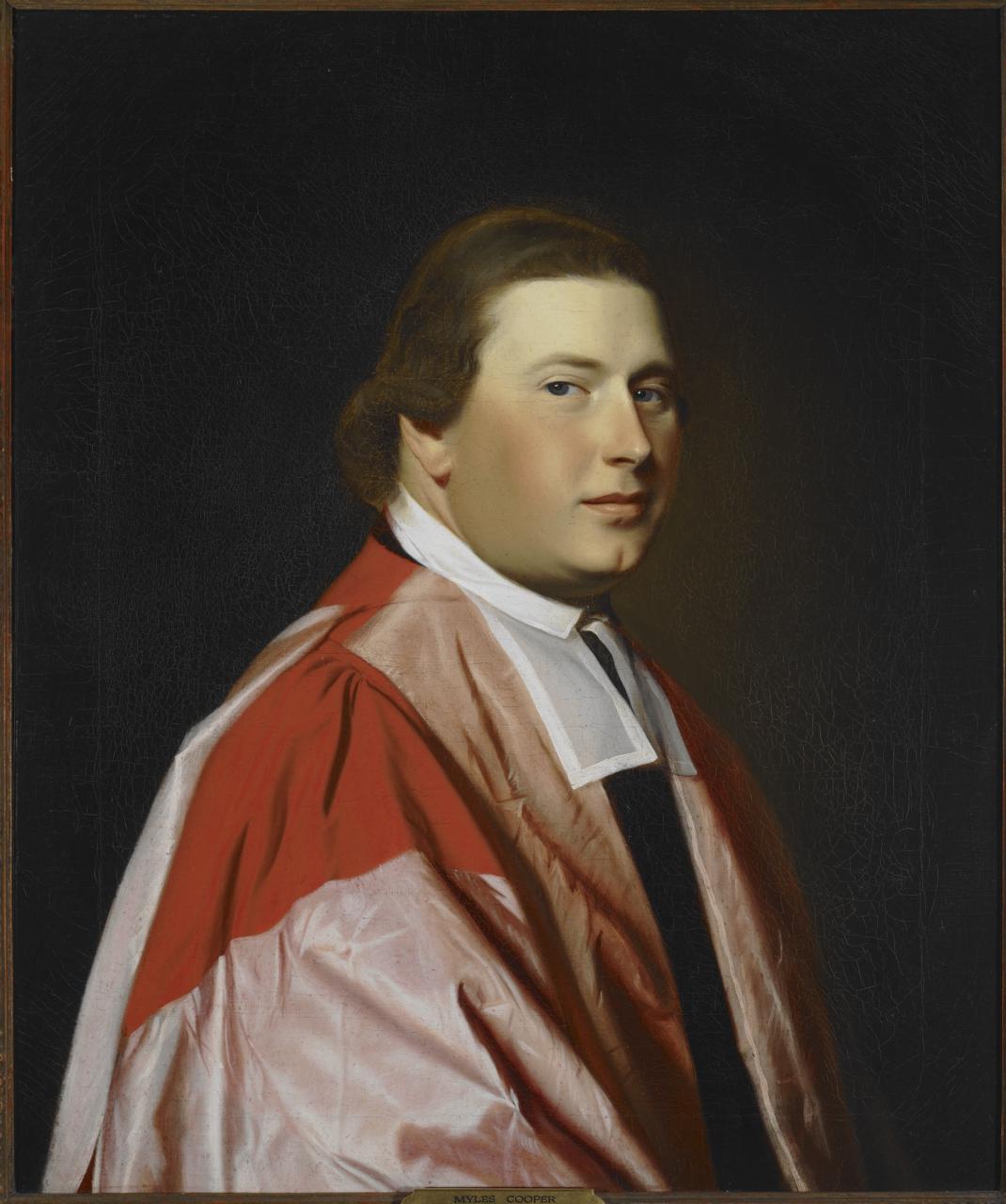
Fig. 1. John Singleton Copley (American, 1738-1815), Portrait of Rev. Myles Cooper (1737-1785), 1768, oil on canvas, 30 x 25 in. (76.3 x 63.5 cm), Art Properties, Avery Architectural and Fine Arts Library, Columbia University, Gift of The New-York Historical Society, 1820 (C00.0735)
Maria Dimitropoulos Why doesn’t Columbia have a museum like other Ivy League schools in the United States that were founded around the same time?
Roberto C. Ferrari Columbia considered building a museum at various points in its history, and even with the establishment from the 1890s of the McKim, Mead, and White-designed Morningside Heights campus in northern Manhattan there was some discussion of this. However, the administration decided instead to display art and cultural heritage objects throughout the buildings, both to beautify the campus and to be presented as study collections, offering students a more immersive life experience as part of their education. This ideology supported Columbia’s Core Curriculum, established a century ago, so students could learn from works on view. In the 1910s Columbia created the Committee on Art Properties, a Provost-appointed group, to make recommendations to the President, Provost, and Trustees about the acquisition of new works of art, and to ensure proper stewardship of the collection for research and study and for educational programs. That Committee still exists and today includes administrators, faculty, staff, and student representatives who vote to approve or decline proposed donations of works of art and to act as advocates for the collection throughout the University.
Maria Dimitropoulos It sounds like Art Properties has several functions, then, such as research, exhibition development, collection management, and educational programming. Is that right?
Roberto C. Ferrari Absolutely. From the time the first curator was hired in the early 1960s to oversee the collection and organize it, the goal was to maintain the highest professional standards like a museum. However, much of what we do focuses first and foremost on supporting education so eventually the department became a special collection unit in Avery Architectural and Fine Arts Library. Prof. Meyer Schapiro (1904-1996), one of Columbia’s—and art history’s—most important scholars, was a great early advocate for the curatorial department. He worked with graduate students in the Department of Art History and Archaeology to inventory the University’s collection across campus and they began the accession number sequences that we still use to this day. We now estimate that the Art Properties collection comprises over 13,000 works of art and cultural heritage objects, in all media from all time periods and cultures, with strengths in American and Asian art, as well as archaeological collections from the ancient Near East, Greece and the Aegean, and ancient Rome, Etruria, and South Italy.
Maria Dimitropoulos Is that how collections like the pottery sherds excavated by Clarence Young and the ceramics and other objects acquired by George N. Olcott came to be part of Art Properties? [Editorial Note: On Young and Olcott, see the essays by Monica Bulger and Joseph Woldman in this issue.]
Roberto C. Ferrari Yes, exactly. Most of the collection is the result of gifts and bequests from donors and collecting professors. There is no acquisitions budget to purchase art. Some of the text-based archaeological objects collected by professors like Olcott went to the Rare Book and Manuscript Library, but the remainder came to Art Properties to ensure uniform intellectual control, proper stewardship, and active participation in support of curricular integration and research and study. Columbia’s collecting professors in archaeology, classics, and philology had parallels in other departments like anthropology, philosophy, and even chemistry, and these collections are part of Art Properties too. For example, in the 1870s Prof. Charles Frederick Chandler (1836-1925) established a chemistry museum that included early examples of photography and photomechanical reproduction. And during the 1920s and 1930s Prof. Wendell Ter Bush (1866-1941) amassed a large collection of Native American art and cultural heritage objects (Fig. 2) made by members of the Navajo (Diné), Pueblo, and Northern Plains tribal nations. These collections are all part of Art Properties and available for students to consult for research projects and to be used for study in the classroom. This seems like an appropriate moment for you, Maria, to tell readers about your research and dissertation.

Fig. 2. Waldo Mootzka (Hopi, 1910-1940), Hopi Snake Dance, 1930s, oil on board, 7 1/2 x 23 1/8 in. (19.1 x 58.7 cm ), Art Properties, Avery Architectural and Fine Arts Library, Columbia University, The Bush Collection of Religion and Culture (C00.1483.393). Photographed by Dwight Primiano, Avery Architectural and Fine Arts Library.
Maria Dimitropoulos In my dissertation, I examine representations of intrafamilial homicides in vase painting and other media from the archaic to the late classical periods, in order to get a better understanding of how Greeks expressed and reacted to a lack of harmony in the household, and how these familial conflicts acted as metaphors for the greater issues faced by their society. Though portrayals of unabashedly explicit violence piqued the interest of the Greeks, only a small part of the visual repertoire of violence includes representations of one of the most sinister transgressions: the murder of one’s own kin. Rivalries within the Greek family—between spouses, between biological and adopted children, between male and female siblings—created tensions, which were consequently reflected in art. For example, as the Athenian legislative system enforced strict inheritance laws, images of the brothers Eteokles and Polyneikes fighting for power circulated, perhaps capturing the anxieties present in reality. I am particularly compelled by examples of such images found in the art of Greek colonies of South Italy. It is fascinating to consider these objects as exports that have been reinterpreted in a new context, along with other cultural products like Greek myth, language, and drama.
Roberto C. Ferrari You’re working on such an interesting topic. Is this partly why you decided to work on the collection of ancient South Italian pottery in Art Properties?
Maria Dimitropoulos Yes, I was surprised to learn that among ancient art objects at Columbia is this entire collection dedicated to South Italian vases! My presentation for the New York seminar was on a group of objects from the William J. Nolan Collection, a diverse collection of 57 pieces of fourth- to third-century BCE Apulian pottery from South Italy, including black and red-figured vases, black-glaze ware, Xenon ware, and other courseware vessels. Most of the vases in the Nolan collection are of the black-glaze type. This name refers to the lustrous dark gray to black slip that was commonly used in the production of ceramics in Italy from the fourth to the first centuries BCE. Early in the third century, the popular red-figure style was abandoned in favor of new Hellenistic techniques such as these glossy relief wares, which derived their inspiration from embossed metalware. The best examples are the so-called Calenian relief wares. One noteworthy object from Columbia’s collection is a third-century BCE black-glaze guttus, a spouted container used for controlling the flow of liquids with a strainer at the top for filtering out impurities (Fig. 3). Like many vessels of this type, the top of our guttus is decorated with a portrait relief of a Medusa face that is surrounded by incised concentric circles.
In addition to studying the objects of the collection, I conducted archival research in both Art Properties and the University Archives in order to piece together information about the donor and context of the 1983 donation of the collection of South Italian pottery, which had been tucked away in storage until very recently. I also began researching trends in antiquities sales in auction houses and galleries in the 1980s, to gain understanding of how the Nolan collection fit in the broader landscape of art collecting at that time. The objects in the collection are representative of the huge range of products that were being produced in the fourth century BCE in Italy. Given the range of wares included in the donation, I concluded that the donor, William Nolan, intended these objects to have a didactic function as part of a formal study collection.
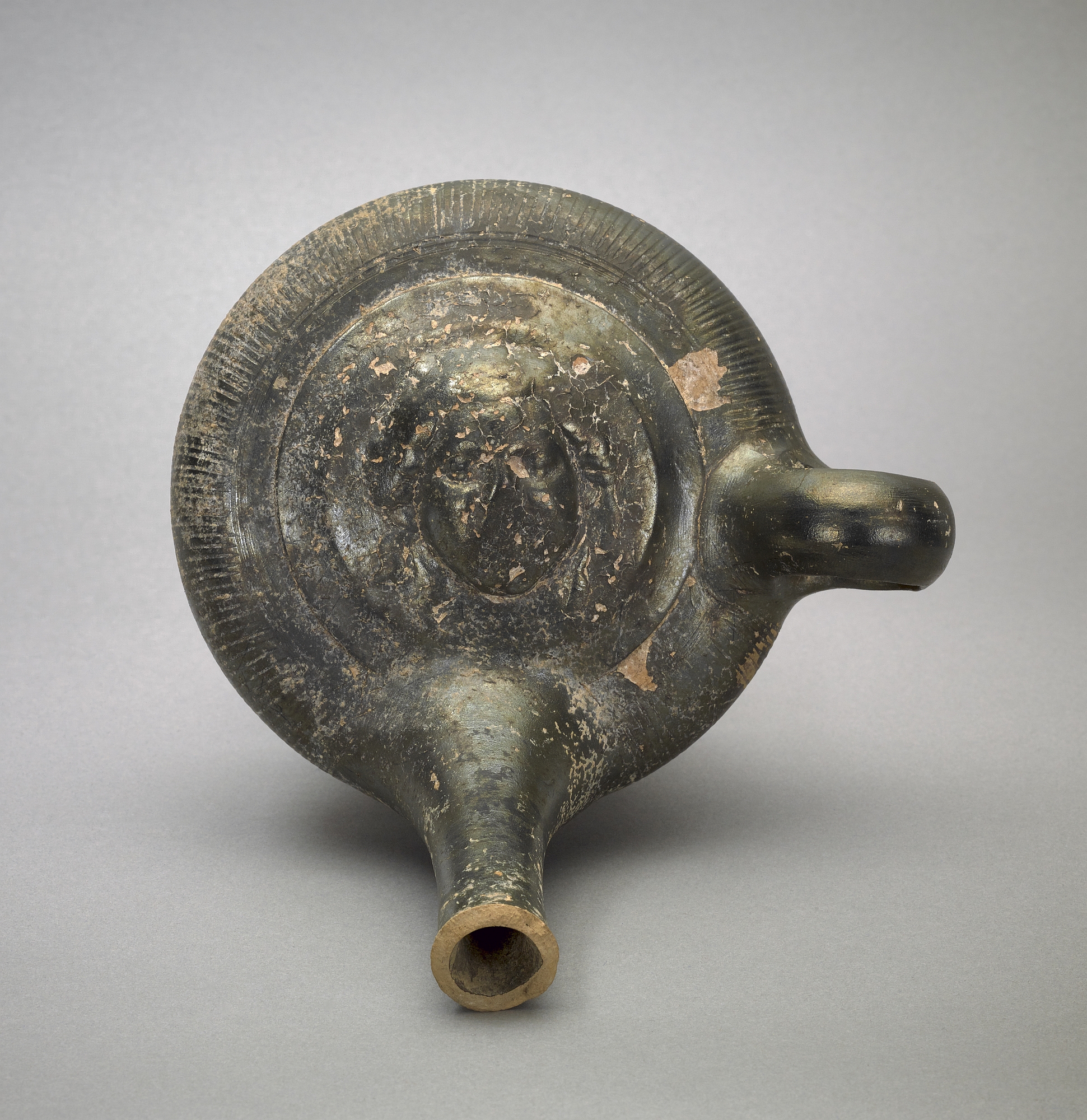
Fig. 3. Maker unknown, Apulia, Italy, Guttus (Vessel with Spout), late 3rd century BCE, clay with glaze, H. 5 13/16 x W. 6 1/16 x D. 6 9/16 in. (14.9 x 15.3 x 15.5 cm), Art Properties, Avery Architectural and Fine Arts Library, Columbia University, Gift of William J. Nolan (1983.11.032). Photographed by Dwight Primiano, Avery Architectural and Fine Arts Library.
Roberto C. Ferrari This is so fascinating, especially how this collection of ancient utilitarian objects from South Italy takes on new life, not just from a close study of the objects themselves, but their connection to institutional and personal histories, and art-historical/archaeological methodologies. What were some of the other ways in which you learned from objects as part of the Parallel Heritages project, and how do you think this experience has helped you in your education overall?
Maria Dimitropoulos Our group of Columbia scholars were welcomed to the Université Paris 1 Panthéon-Sorbonne campus with a tour of the Sorbonne building and a lecture on the history of the university system in Paris. In 1970, the Sorbonne was divided into several autonomous universities, and this impacted the distribution and storage of its antiquities. We visited the Institut d’Art et d’Archéologie at the Centre Michelet, where we saw the collections of Greek and South Italian pottery, as well as the Centre’s archives, offprints, cylinder-seal impressions, and a topographic model of ancient Rome. There has been a renewed interest in the study of the collections in Paris, like there has been at Columbia, since the inception of the Parallel Heritages project.
We concluded our Paris trip with a visit to the gardens of Versailles, where we took a tour of la Petite Écurie, a building on the grounds of Versailles that has been transformed into the gypsothèque of the Louvre. It contains over five thousand plaster casts of Greek and Roman sculpture from various collections, including those of the l’Institut d’art et d’archéologie. While the original sculptures are scattered in museums throughout the world, this gypsothèque gathers all of the most significant examples in Greek and Roman art under one roof, which is the ideal way to study the development of style. We had especially fruitful discussions on how this building could serve as a resource for an entire course on ancient sculpture!
The seminar enabled me, and my Columbia colleagues, to discuss the ways in which each University can proceed so that the collections become more integrated into the curriculum and research of students and faculty. For example, in addition to introducing undergraduate students to the vast collections at the Metropolitan Museum of Art, it would be incredible to organize a cultural “outing” right here at our own institution, geared not only towards advanced art history majors, but even towards students taking introductory courses like Art Humanities.
What other ways have students and faculty utilized the Art Properties collection in recent years?
Roberto C. Ferrari Students and faculty in the arts and humanities are, of course, our primary users, but as a curator and educator I am continuously intrigued by the ways a single work of art can be reinterpreted for different learning experiences across disciplines. For instance, the collection includes a number of high-quality ancient Chinese ritual bronzes from the Shang and Zhou dynasties, ca. 1600-256 BCE (Fig. 4). In an art history or archaeology class, a gui, or ritual vessel for grains, may be studied for its materiality, artistry, and technique, as well as its social historical construct as a cultural heritage object. But the same object utilized in a Chinese language and literature class might focus on the ancient calligraphic scripts and their literary meaning, and the same vessel as a funerary object may be interpreted quite differently in religious studies and anthropology classes. Students in chemistry and historic preservation have even studied the vessels for their metallurgical compositions and patinations. It has been exciting to see at Columbia how these objects support multiple disciplines and can be utilized as a teaching tool for students in a variety of ways.
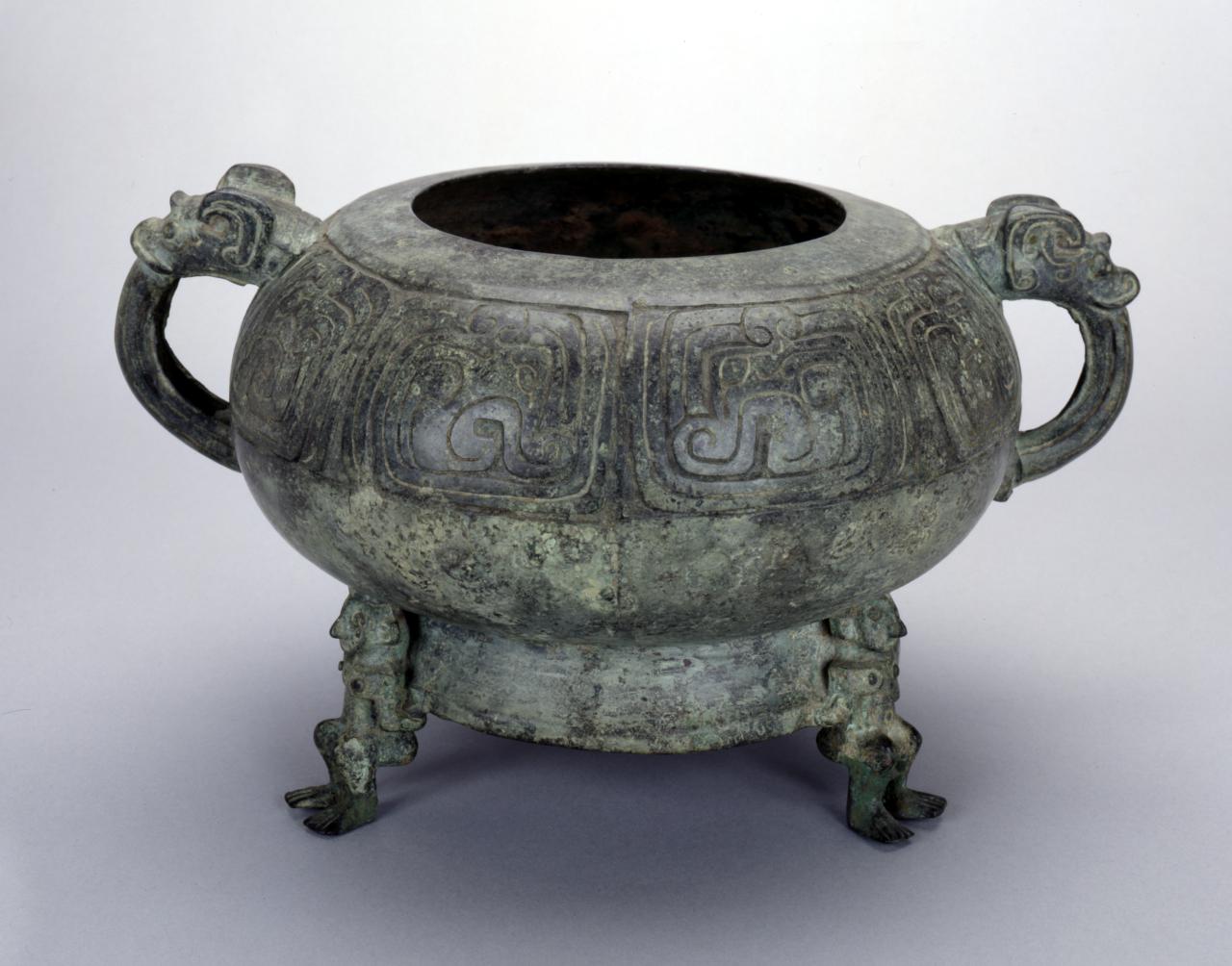
Fig. 4. Maker unknown, China, Gui (Ritual Grain Vessel), Eastern Zhou dynasty, Spring and Autumn period (771-476 BCE), bronze, H. 6 3/4 x W. 11 1/2 in. (16.9 x 29.5 cm), Art Properties, Avery Architectural and Fine Arts Library, Columbia University, Arthur M. Sackler Collections (S0495)
Maria Dimitropoulos This past year, because of the COVID-19 pandemic, professors and students have relied on online resources perhaps more than ever before. Digital databases are proving to be crucial for research in every field. What efforts have been made to catalog and digitize these diverse and robust collections at Columbia?
Roberto C. Ferrari For the longest time, one of the greatest challenges was that no one could search online what was in the collection, so when I started at Columbia we knew addressing this was priority in order to best support educational programs. One of the advantages of working in a library system is the broad understanding of metadata and the importance of organizing it consistently in order to make objects discoverable, so we have had wonderful partners throughout Columbia University Libraries to make this happen. In addition, establishing two paid part-time graduate student assistantships has helped Art Properties staff catalog and research works of art from various parts of the collection. This research includes provenance, which today is so important to know and to be transparent about. More than 50 percent of the collection is now represented by item-level records in CLIO, the Libraries catalog, which is amazing when you consider that up until a few years ago no one could search the collection online. We are also digitizing the collection for publication requests and releasing these images online in various platforms. But that work takes a great deal of time and financial resources, which to be honest we do not have, so we are always seeking out creative ways to raise funds and find support for these projects.
Maria Dimitropoulos That is certainly an impressive contribution to making the collection better known so it can be used by students and faculty. What else is Art Properties doing?
Roberto C. Ferrari We have a few works of art from the collection on long-term loan to institutions like Fairfield University Art Museum in Connecticut, and The Metropolitan Museum of Art in their Greek and Roman and Egyptian departments. We also actively loan objects to exhibitions in museums worldwide. These exhibitions and digitization efforts reinforce the significance of the collection to the entire Columbia community and public at large, and by extension enhance and support the curricular projects and educational programs for Columbia’s students and faculty. It is through educational programs like Parallel Heritages that students are able to examine closely these unique archaeological objects and other works of art, and help advance knowledge about Columbia’s collection. Students are our future leaders and, through this type of object-based learning, they can study our global past to enrich our lives today and teach us the lessons we need to know for tomorrow.
Maria Dimitropoulos Thank you, Roberto, for taking the time to reflect on Parallel Heritages and for telling us more about Columbia’s holdings in Art Properties! I anticipate that the students and faculty in New York and Paris will continue to use the collections for object-based research and teaching, and I look forward to continuing these fruitful collaborations and discussions with my colleagues.
Maria Dimitropoulos is a PhD Candidate in the Classical Studies Program at Columbia University.
Roberto C. Ferrari is Curator of Art Properties at Columbia University’s Avery Architectural and Fine Arts Library.
Published on May 11, 2021.

